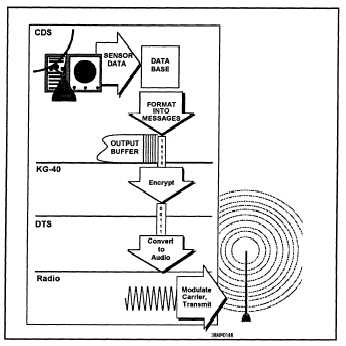Figure 4-4.—Link-11 data flow for the transmit cycle.
transmitted independently in an effort to overcome
propagation-caused signal losses. The UHF radio
uses frequency modulation; therefore, only the USB
is used.
Receive Cycle
When a transmitted signal is received, the receiver
demodulates the audio tones from the RF carrier and
passes them via the communications switchboard to
the DTS. The DTS demodulates and demultiplexes
the audio tones into digital data. The digital data is
sent to the cryptographic device where it is decrypted
and sent to the CDS computer for processing.
LINK-11 NET OPERATING MODES
Before we look into the actual operation of the
data terminal set, you need to have some knowledge
of the Link-11 modes of operation and how the
messages are formed. Link-11 employs networked
(net) communications techniques for exchanging
digital information among airborne, land-based, and
shipboard systems. As you have seen, the amount of
hardware required to support Link-11 operations is
relatively small; however, establishing and
maintaining a successful link can be very complex.
Establishing a Link-11 Net
The establishment of a successful link involves
the interaction and teamwork of the operators and
technicians of several units working toward the
common goal. If one unit is having trouble with the
link radio, data terminal set, or other equipment, it can
make the entire link unreliable.
When a task force is about to deploy, the task
force commander will issue a message that has the
necessary information required to establish Link-11
communications. The information in this message
includes a list of primary and secondary frequencies,
designation of the initial net control station, initial
gridlock reference unit (GRU) designation, PU
identification and addresses, initial data link reference
point (DLRP), and other required operating
procedures. Voice communications are also required
for net control and coordination during initialization.
When the task force is formed, the picket stations
inform the net control station (NCS) of their readiness
to establish link operations. Upon establishing
communication with all units, NCS transmits Net
Synchronization (Net Sync). If the NCS is using
corrected timing (normal mode), the Net Sync verifies
the communications path between NCS and all picket
units. If a picket unit cannot receive Net Sync, it
cannot participate in the net. Net Test should follow
Net Sync. Net Test is used to confirm connectivity
between the Link-11 units. Units having difficulty in
receiving Net Sync or Net Test should report to NCS
that they are not able to participate in the net and then
begin corrective action.
When Net Test is completed, all picket stations
report their status to NCS. Then NCS directs all PUs
to switch to the Roll Call mode and initiate link
operations. Net Synchronization and Net Test are
used in the initialization of the net. The normal mode
of operation is Roll Call.
The above scenario has introduced you to several
new terms and modes of operation. These are
explained in detail in the following paragraphs.
4-5

